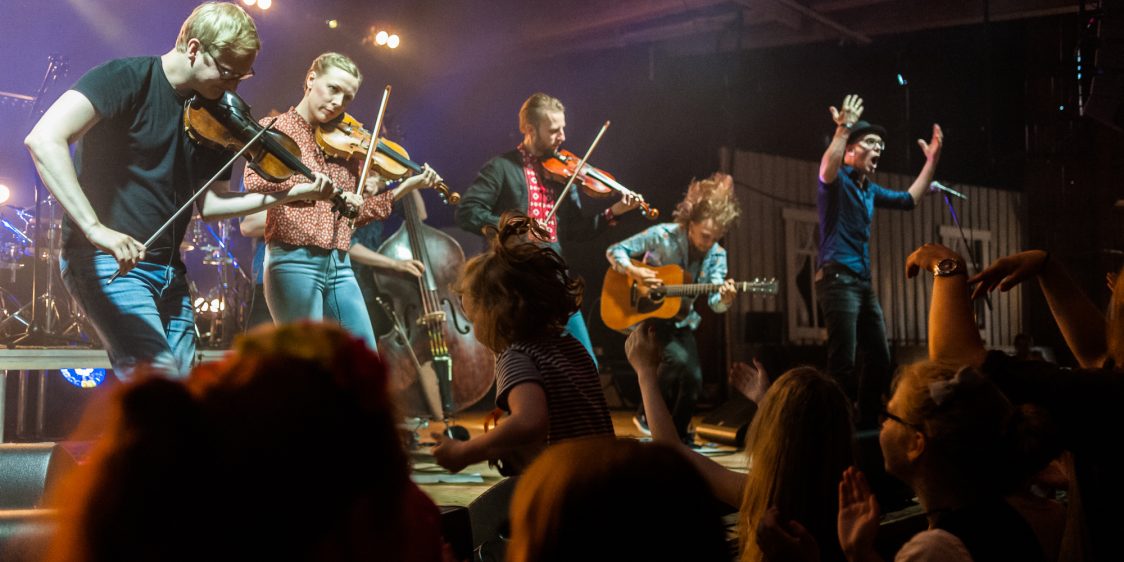
Kaustinen fiddle playing inscribed to UNESCO Representative List of the Intangible Cultural Heritage of Humanity
UNESCO’s Intergovernmental Committee inscribed Kaustinen fiddle playing to its Representative List of the Intangible Cultural Heritage of Humanity on 15th December at its currently ongoing meeting in Paris. In Kaustinen fiddle playing, estimated to be played by several hundred people of all ages.
In 2016, fiddle playing in Kaustinen was included in the National Inventory of Living Heritage, from which it was nominated as Finland’s entry to UNESCO’s list in 2018. A working group, formed by five musical communities from Kaustinen, worked with the Finnish Heritage Agency for approximately two years in an application project that inspired extensive participation.
‘Finnish folk music and the Kaustinen fiddle playing have earned their place amongst elements like reggae, fado, flamenco and tango,’ says Senior Adviser, Leena Marsio, who is in charge of application procedures and the implementation and monitoring of the UNESCO Convention in Finland.
With a population of around 4,300, Kaustinen is believed to have hundreds of people of all ages who carry out the tradition. One important factor as to why this tradition has been so successfully passed on from generation to generation is the internationally acclaimed method of näppäri
pedagogics. Roughly 70 children and young people in the region take part in näppäri. In addition to that, the dance and music groups of Kaustinen Youth Association have close to 200 local children and young people.
‘When I was a child, musical heritage was part of daily life in Kaustinen, and it continues to live on today, even though the practice has become somewhat more organised. Music can have a profound effect on our wellbeing,’ says the father of näppäri pedagogics, Mauno Järvelä.
Kaustinen has been famous for its music since the 19th century. The local melodies are strongly based on the region’s wedding traditions. The UNESCO application highlighted the fact that Kaustinen’s neighbouring municipalities are also contributing to the tradition and that the tradition is further promoted by other elements, such as traditional kantele music, dance and costumes.
Purppuripelimannit and Kaustinen Folk Music Festival as catalysts for a new golden era
Kaustinen became more widely known in the 1950s-1970s, largely thanks to Purppuripelimannit, who performed at Kaustinen, and the compositions of the group’s leading figure, Konsta Jylhä (1910–1984). Other well-know folk music composers in the area have included Wiljami Niittykoski (1895–1985) and Otto Hotakainen (1908–1990) from nearby Halsua, while these days the tradition is carried on by more modern folk musicians, such as the world-renowned artists JPP and Frigg. In addition to these talents, several masters of other musical genres grew up influenced by Kaustinen’s tradition, including Baroque violinist Kreeta-Maria Kentala, conductor Juha Kangas and folk-pop artist Aili Järvelä.
The popularity of Purppuripelimannit and Kaustinen Folk Music Festival, the latter of which dates back to 1968, initiated a Renaissance of Finnish folk music that led to the foundation of new folk music groups and events around the country. Nowadays, the festival in Kaustinen is the most important Finnish folk music festival, both domestically and globally, with more than 4,000 amateur and professional performers every year.
‘We believe that Kaustinen’s tradition represents the entire Finnish folk music scene, which through this process and recognition, has boosted its popularity and people’s desire to safeguard their own musical traditions,’ says the Finnish Folk Music Institute’s director, Matti Hakamäki, who served as the chair for the application working group.
Background: UNESCO Convention and lists
Finland ratified the UNESCO (United Nations Educational, Scientific and Cultural Organization) Convention for the Safeguarding of the Intangible Cultural Heritage in 2013. The Finnish Heritage Agency is responsible for the implementation of the Convention in Finland, and the Ministry of Education and Culture is in charge of carrying out and reporting on the Convention to UNESCO. Finland’s first element on the lists is the sauna culture, which was inscribed in December 2020.
The Convention promotes the safeguarding of intangible cultural heritage and makes people’s, communities’ and groups’ living heritage more visible. Intangible cultural heritage may include e.g. oral traditions, performing arts, social customs, rituals and ceremonies, or knowledge, skills and practices related to nature and the universe.
As part of the Convention, living heritage is inventoried both at a national and a global level. UNESCO maintains two intangible cultural heritage lists and a register of best practices. The aim of the lists is to increase the visibility of living heritage and share good practices between countries. Before the currently ongoing UNESCO conference, the lists contained a total of 584 items from 131 countries. The Kaustinen fiddle playing was one of 60 applications processed.
Inquiries
Senior Adviser Leena Marsio, Finnish Heritage Agency, leena.marsio@museovirasto.fi, tel. +358 (0)2 9533 6017
Director Matti Hakamäki, Finnish Folk Music Institute, matti.hakamaki@kaustinen.fi, tel. +358 (0)40 3588 921
UNESCO lists of Intangible Cultural Heritage
Other news about intangible cultural heritage in Finland
More information about intangible cultural heritage in Finland